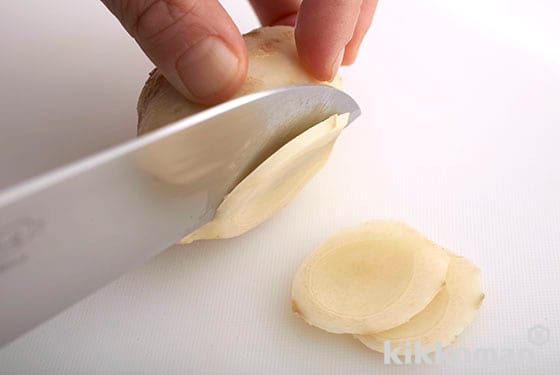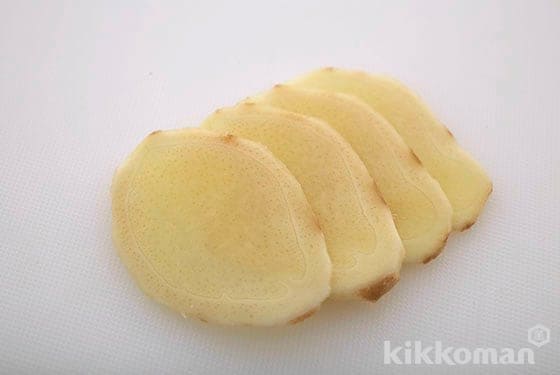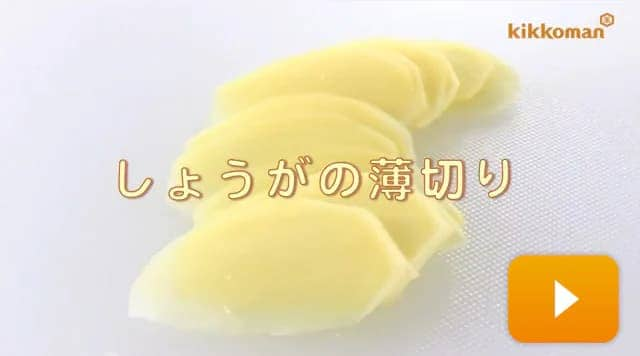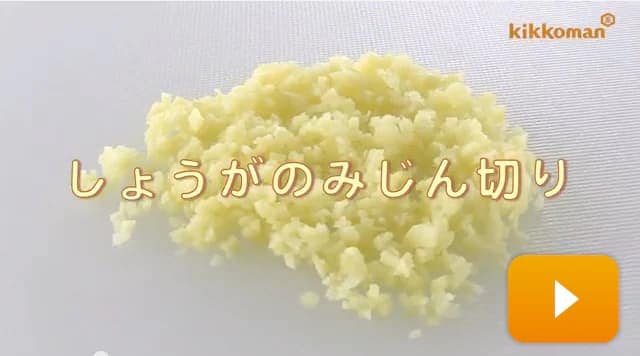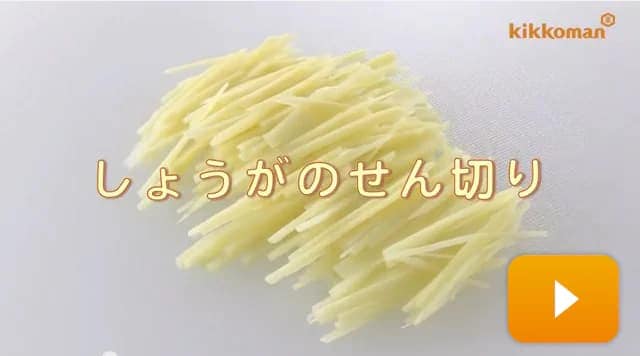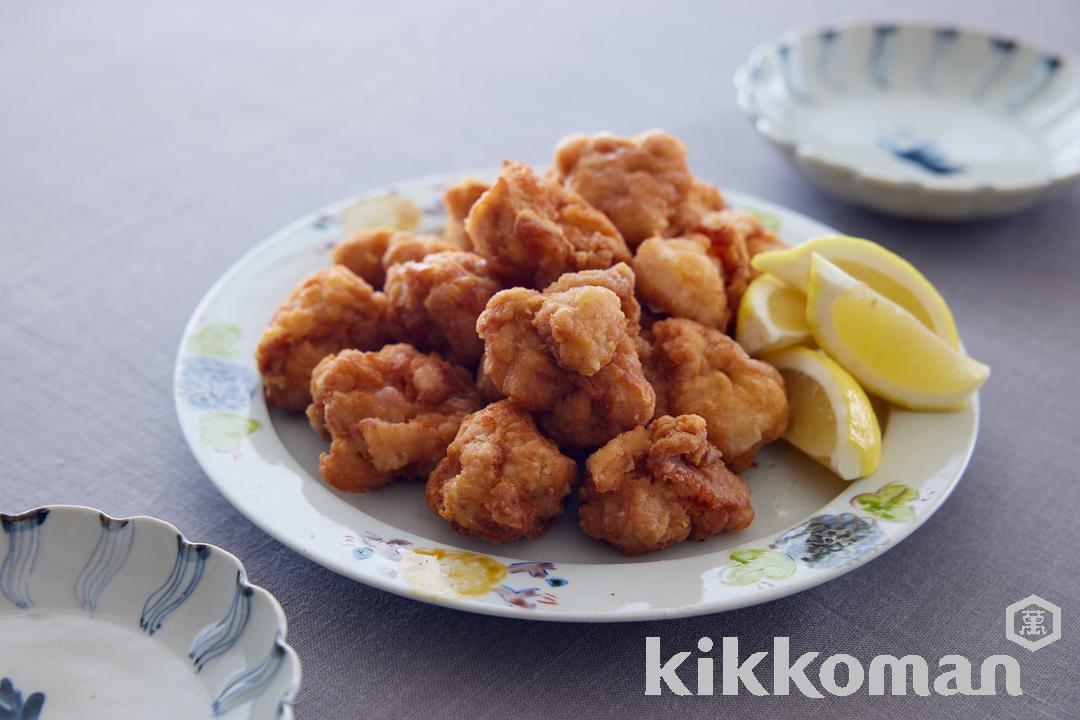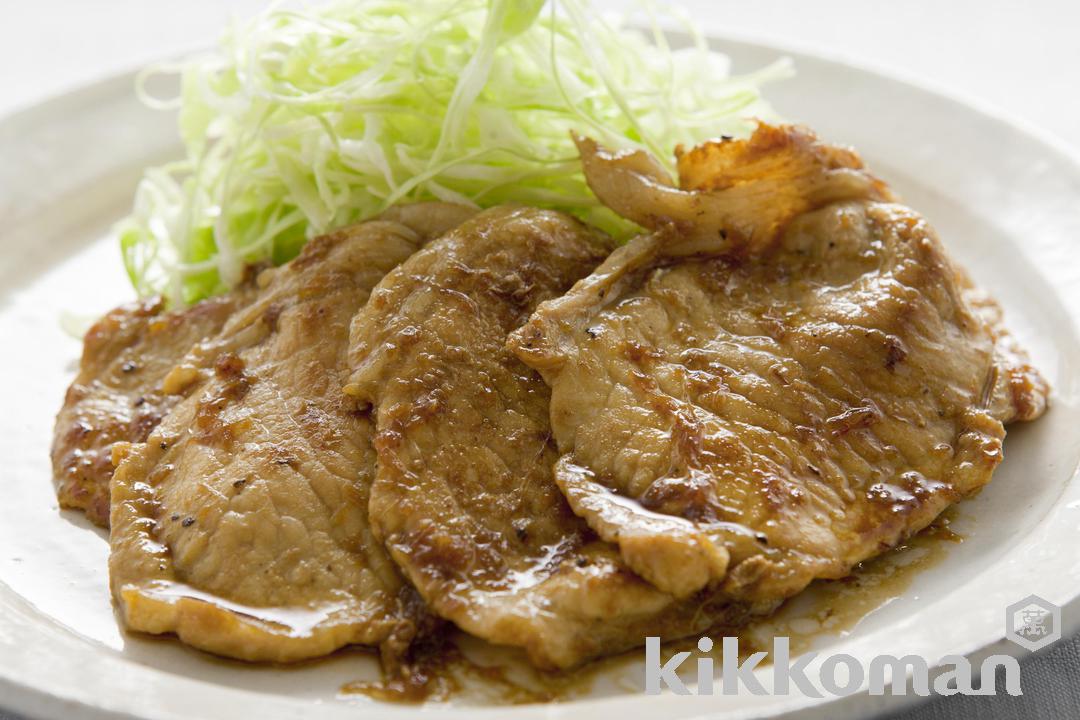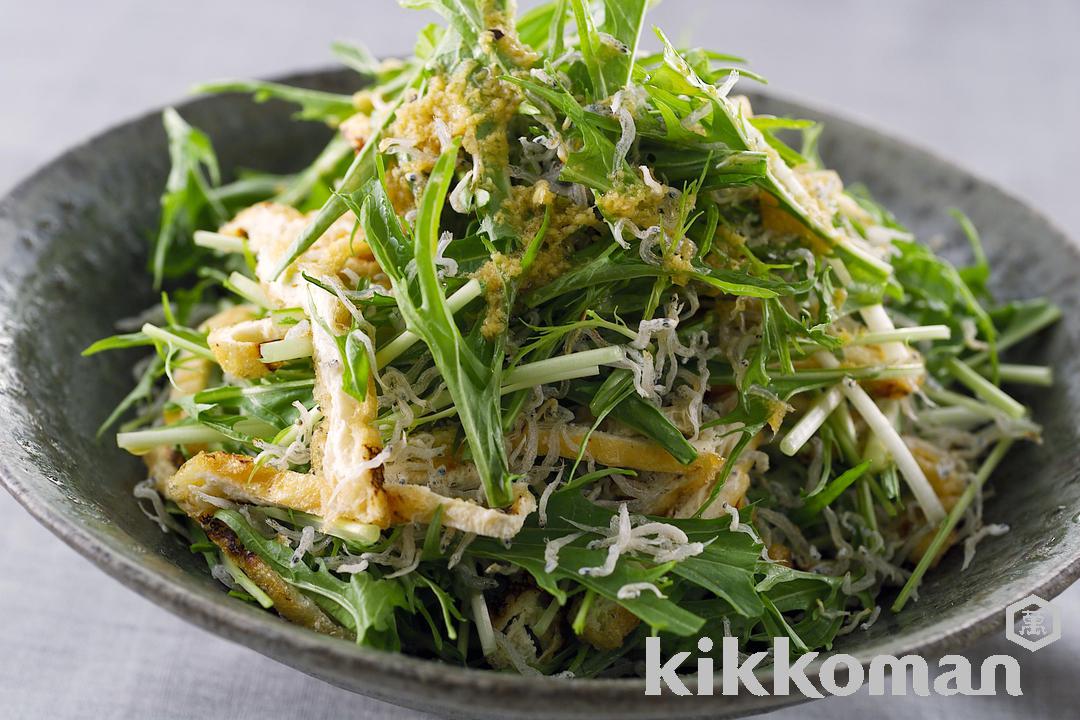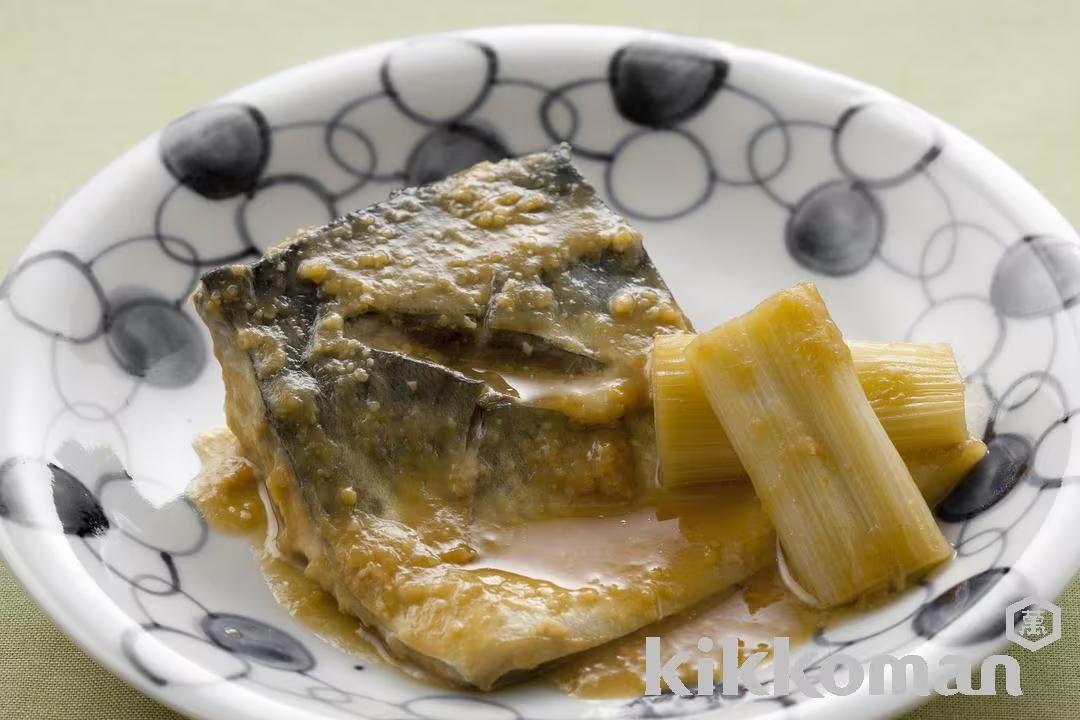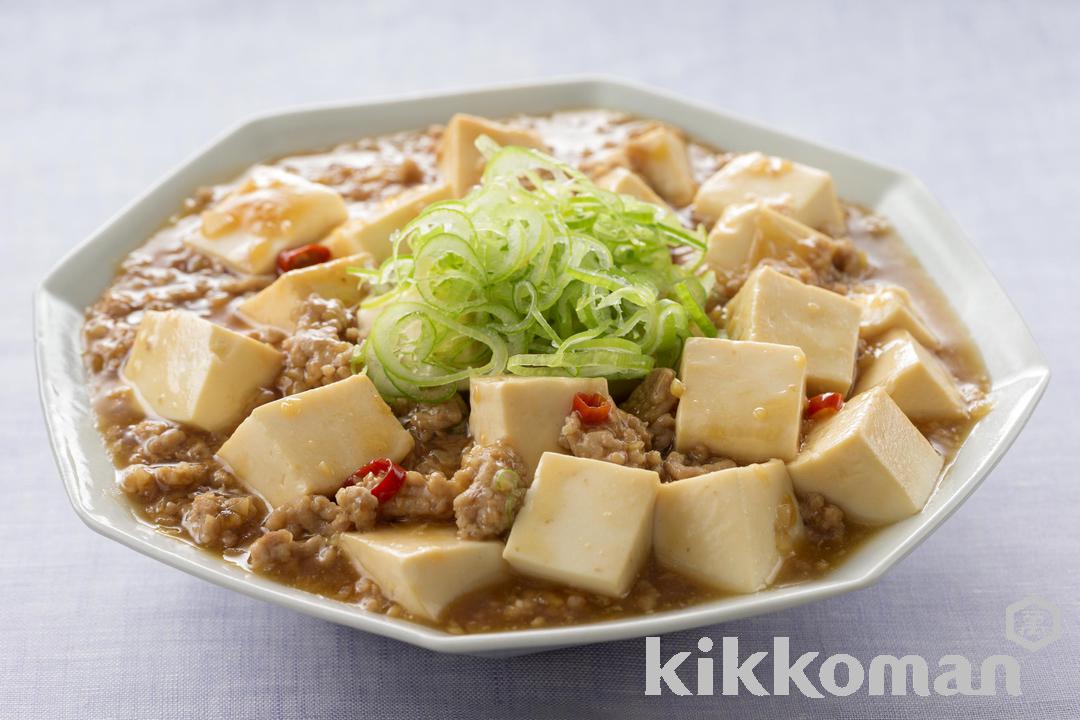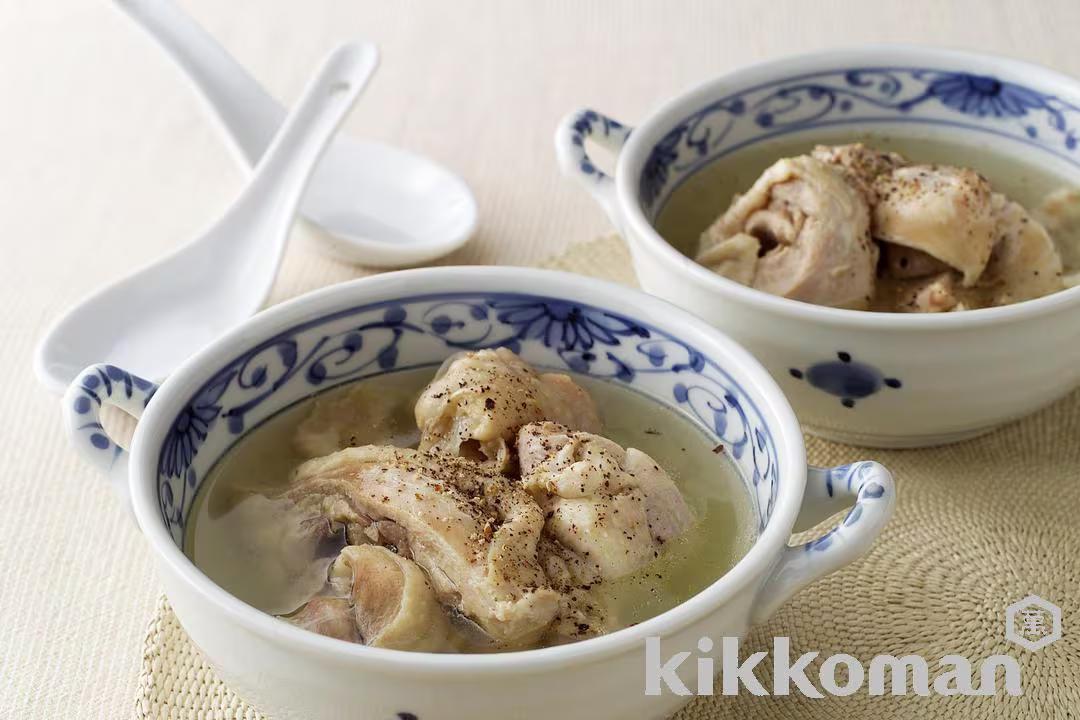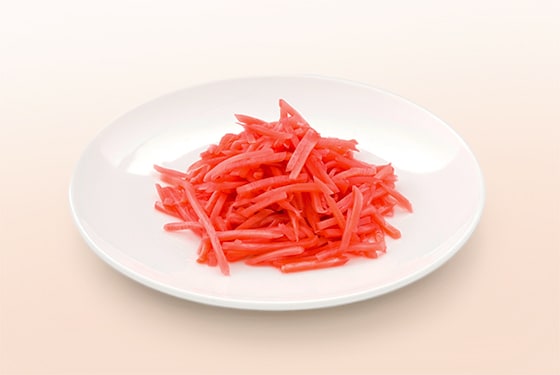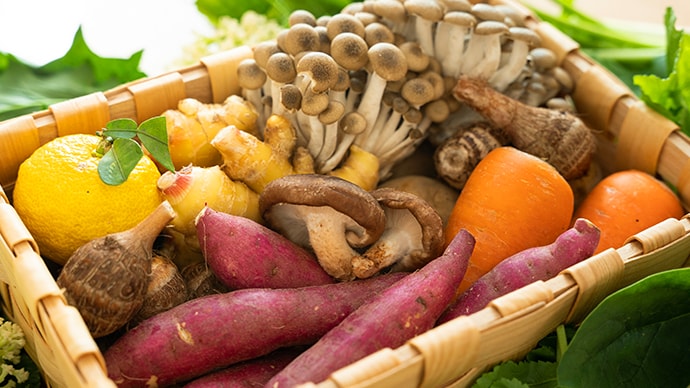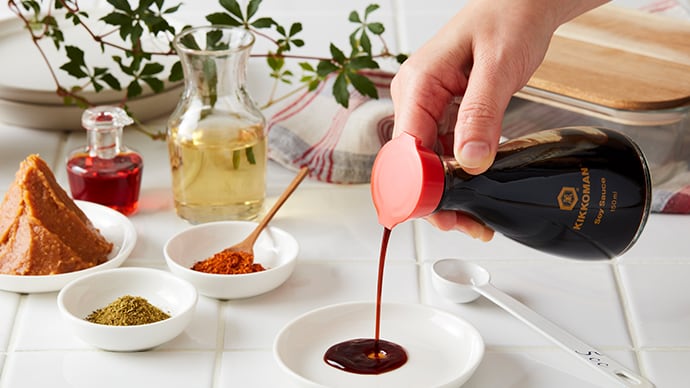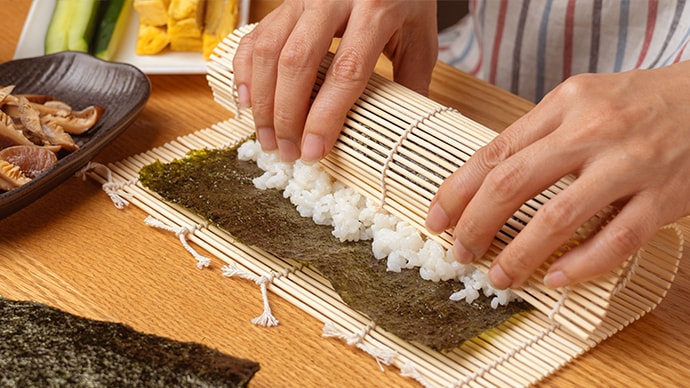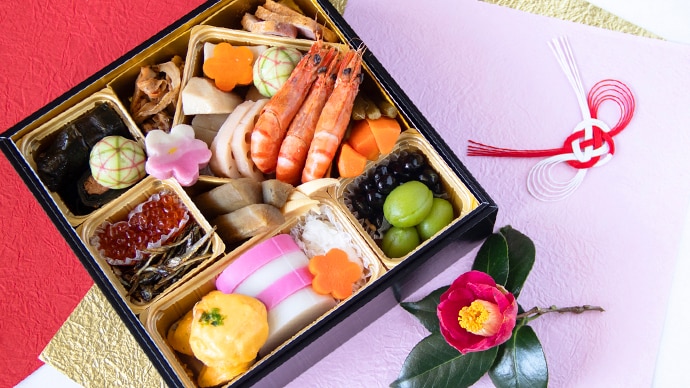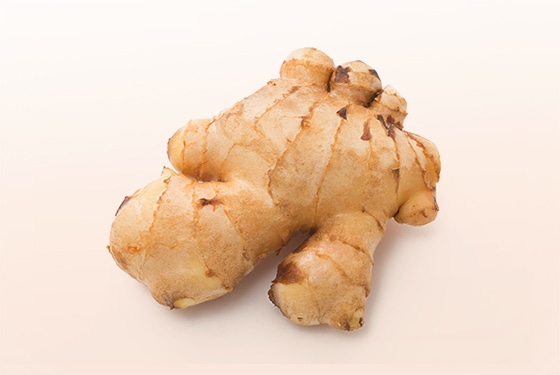
A strong, aromatic vegetable with sterilizing properties, holds a unique aroma and spiciness that whets the appetite
What is ginger?
Ginger (しょうが in Japanese) is a root vegetable with a unique aroma and spiciness that improves blood circulation and warms the body. It has strong sterilizing properties, and the fact that it has long been eaten together with meat and fish can be said to be a part of Japanese culinary wisdom. It is pickled in sweet vinegar and served with sushi as sliced ginger, or grated and served with sashimi, tataki (finely chopped sashimi of blue fish such as horse mackerel or saury), somen noodles, udon noodles, etc. It is also used in a wide range of dishes, including boiled fish, teriyaki fish, ginger pork, amazake(a traditional Japanese drink made from fermented rice), and kudzu (Japanese arrowroot) drink.
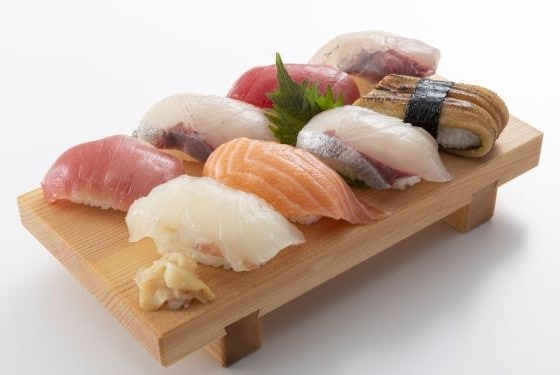
Nutrition facts
Ginger contains gingerol. Gingerol is the spicy component of ginger, and has antioxidant and anti-inflammatory effects. It also has the effect of warming the body and promoting blood circulation, and is said to be useful for improving poor circulation and metabolism. Gingerol also activates the gastrointestinal system, promotes digestion by activating the secretion of gastric juices, and prompts perspiration. When heated, part of gingerol changes into a component called shogaol, which increases ginger's effects of warming the body even more. Ginger also contains potassium, which helps regulate blood pressure and balance sodium in the body.
If you are looking to feel warmer, ginger is a good addition to soups or hot pot. Shogaol also has antibacterial properties, so it is effective in preventing food poisoning while also serving as a useful deoderizer.
Storage to prevent food loss
Put washed ginger in a storage container, cover with water, and place in the refrigerator. If you change the water every 2-3 days, you can store partially used ginger in the refrigerator for about a month. You can also store it in the freezer wrapped in plastic wrap for about a month.
Trivia
The skin of ginger is rich in flavor and nutrients, so it is best to serve it with the skin on. If you are concerned about dirt, try scraping it thinly with a spoon instead of a knife to avoid scraping off too much of the skin.
Cooking Basics
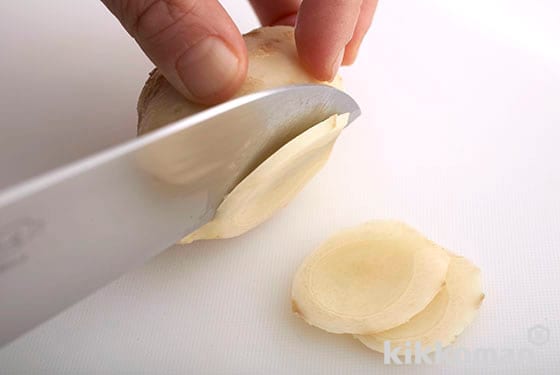
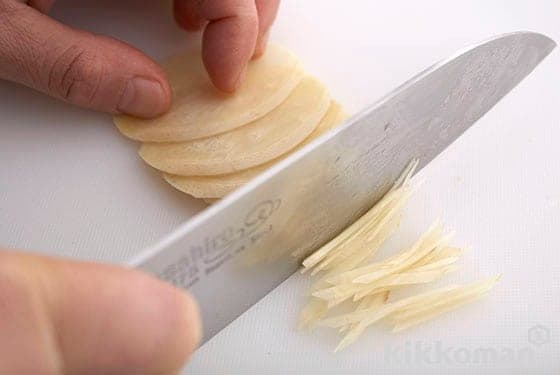
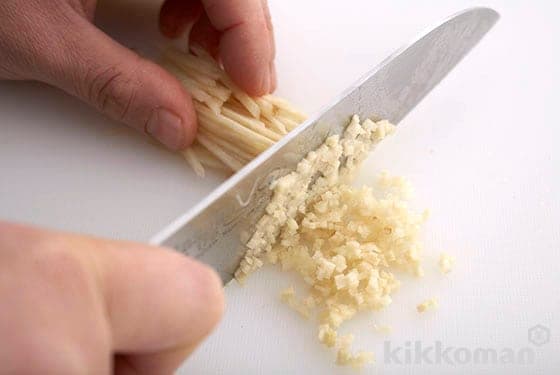
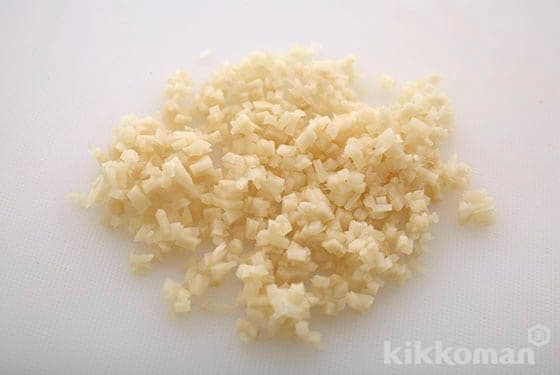
Remove the skin of the ginger and thinly slice, gradually sliding and stacking the slices. Then mince the ginger into fine pieces, and slice again finely at right angles.
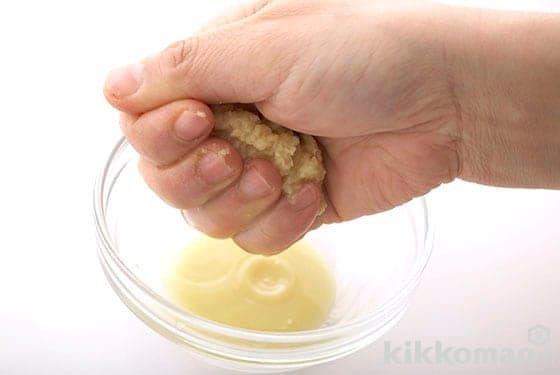
Grate the ginger and then squeeze with your hands. "Ginger juice" is the juice made by squeezing ginger.
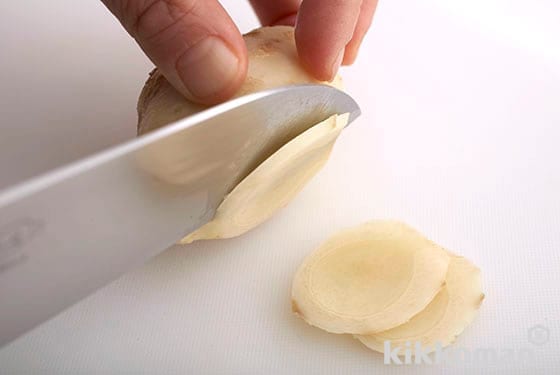
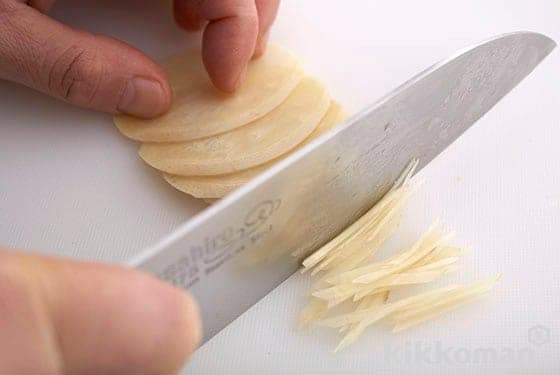
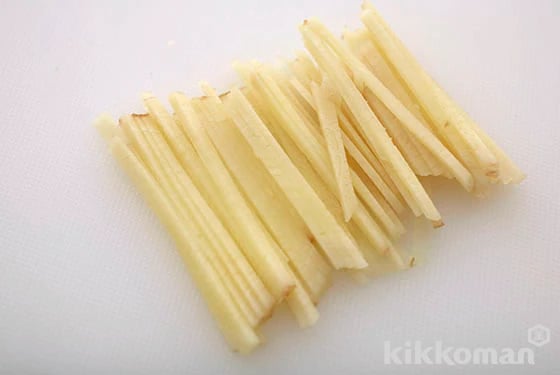
Peel the skin of the ginger, and cut thinly, gradually sliding and stacking the slices. Then thinly slice from end to end.
Related Recipes
30min
438kcal
634mg


